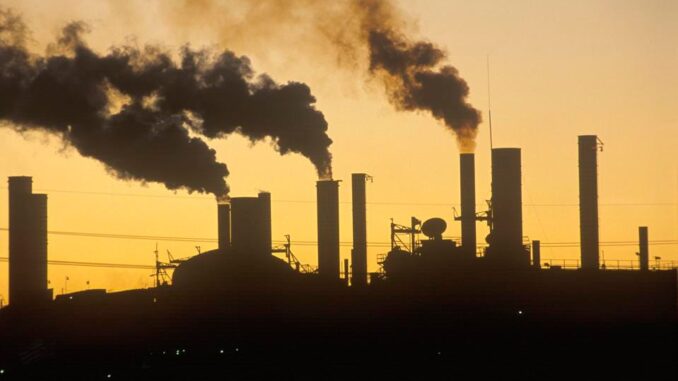
Can renewable energy replace electric power plants that run 24-7 — including nuclear energy — once battery storage matures and the transmission grid expands? It’s unlikely, given that the intermittent nature of renewables requires a backup source — something that can kick on when the weather is not agreeable.
Enter small modular nuclear reactors, which may become the go-to energy source — built to run consistently and as a flexible, carbon-free resource. Those right-sized reactors are emerging now that the U.S. government has incentivized them, making them more attractive for lenders and utilities. The growth potential is enormous as state and international governments make initial preparations.
“You simply must have some form of reliable, baseload power because you can’t get there with assets that operate (part of) the time,” says Jeff Merrifield, partner, Pillsbury Winthrop Shaw Pittman, and a former Nuclear Regulatory Commissioner. “A nuclear power plant is more costly upfront, but it is an asset that operates for 80 years. If you compare that to wind and solar, they generally have 20-year lifetimes and batteries of around eight years. If you compare renewables and batteries to nuclear, nuclear stacks up very, very well.”
Merrifield’s comments took place last week during a virtual press conference hosted by the United States Energy Association in which this reporter was a panelist. The commissioner points to Idaho, Wyoming, and West Virginia, which don’t have nuclear plants but have created legislation allowing small modular reactors to develop. Europe is diving in abroad while Africa’s Ghana and Kenya are prospects.
Right-sized reactors are anything from 50 megawatts to 300 megawatts. But the modules can be combined to form a 1,000-megawatt plant. And if one module goes down, it can be repaired while the rest still operate. Such units have built-in advantages: they generally come with a nuclear waste storage containment device, and they could create drinkable water supplies in those countries where such a resource is in short supply.
TerraPower and GE Hitachi Nuclear Energy launched the so-called Natrium project in September 2020 — a small modular reactor that they hope to commercialize by 2030. They are now testing the technology, along with Berkshire Hathaway’sBRK.B +0.1% PacifiCorp. The Natrium reactors are purportedly able to firm up wind and solar power. In other words, it would be a clean backup generator.
Energy security is the catalyst
NuScale, owned mainly by FluorFLR -2.4% Corp., will also start building in Idaho in 2026, with at least one module to come online in 2029. It says 12 modules can combine to form a 924-megawatt unit. Meantime, Ontario Power Generation is expected to start construction on a small modular reactor in late 2024 and will begin operating in 2028. The Tennessee Valley Authority is using the same technology. It expects to start up a small nuclear plant in the early 2030s.
“We try to ensure we are delivering affordable, reliable, resilient, and cleaner energy as we go forward with the focus on carbon reduction,” says Don Moul, executive vice president, and chief operating officer, of TVA, during the web conference. “You could call that real energy security. I think small modular reactors, and nuclear, have a big part to play in that conversation.”
Wind plants and solar farms are relatively inexpensive to build, offering an immediate solution to climate change. Small modular reactors will — initially — be far more expensive, mainly because the first iterations are now emerging, and the regulatory approval process is cumbersome. How much do they cost, and how long will it take to build them?
Right now, 93 nuclear reactors provide about 20% of the U.S. electricity portfolio. But nuclear comprises about half of the country’s carbon-free electricity. Those reactors can operate safely until at least 2050. However, the Inflation Reduction Act creates production tax credits for clean energy sources, including nuclear. The credits start in 2024 and last until 2032. That will bring down costs.
“Our reactor is about the same price as the Boeing 777,” says Donald Wolf, chief executive of Advanced ARC, during the seminar. “It will be fabricated in a factory and delivered to the site. But there will be a learning curve that goes along — exactly what happened with large-scale computers. That is the model for the small modular reactors.”
Rick Springman, senior vice president for Holtec International agrees, saying those smaller reactors are “first-of-their-kind projects” that will cost more to build. But economies of scale along with automation will drive down the expense. He points to the UAE’sUAE +0.9% Emirate Nuclear Energy Corp, which completed four units totaling 5,380 megawatts. The country wants 6% of its electricity to come from nuclear by 2050. They came in on time and on budget.
“Once these first projects get initiated, it’s going to open up a flood of new follow-on projects,” says Springman. “By 2030, there will be five or 10. By 2035 or 2040, there will be a real hockey stick in terms of growth. The financing will be a lot easier because there will be a reference project.”
It may be a geopolitically smart move
The International Atomic Energy Agency says that the use of nuclear energy will need to double by 2050 to meet global climate goals.
To that end, Europe plans for at least 10 small modular reactors. Poland, which relies on coal, is the most interested. So is Sweden. Its state-owned utility Vattenfall said it must turn to fossil-free energy sources to meet the nation’s growing energy demand. And the French government is investing $1 billion in the technology. Electricite de France SA will build them by 2030.
Are small modular reactors more suitable for advanced nations with existing infrastructure or developing countries with limited electricity access? Richard Mroz, managing Director of Resolute Strategies and former president of the New Jersey Board of Public Utilities, says that smaller reactors can fit into locations where they might not have previously been.
That includes retiring coal sites because the infrastructure and grid connections are already in place. Mroz says it also applies to the industrial sector, pointing to chemical maker Dow, which will develop a small nuclear reactor. It could replace natural gas to make changes to chemical compounds.
“So here in the United States, there’s a great opportunity,” Mroz told the audience. Globally, countries lacking baseload generation are candidates. “From a geopolitical standpoint, the United States government should look at exporting this technology to developing countries for electricity production.”
If this nation is not involved, China and Russia will be, adds Jeff Merrifield, former Nuclear Regulatory Commissioner. However, some countries will need to get their universities and infrastructure up to speed. “When you deploy one of these reactors, you’re talking about building a 100-year relationship from when you begin the operation or begin thinking about ordering a plant until they are decommissioned. So this is important for our country.”
More renewable energy is necessary to meet the climate change challenge. But so are small modular nuclear reactors, which can produce a steady, reliable stream of carbon-free power — units that can also back up intermittent wind and solar electricity. They will trickle in before an overflow occurs both domestically and internationally.





